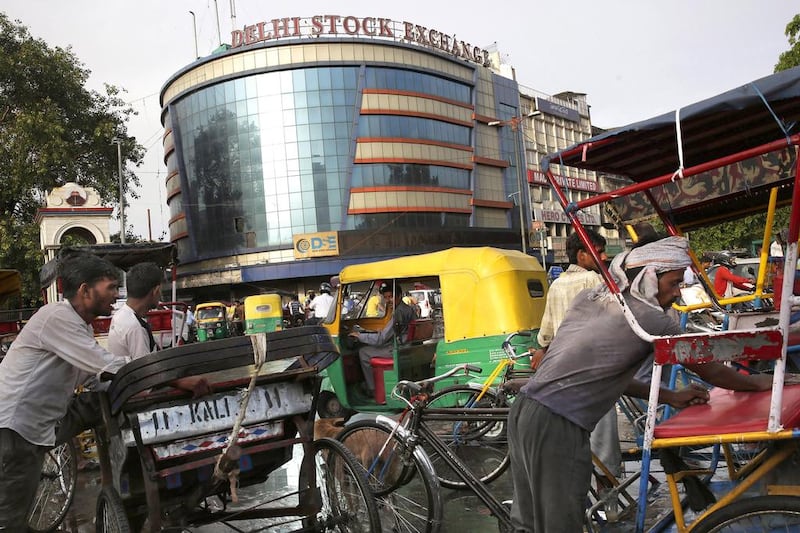Companies in India have yet to see optimism about the country’s economy translate into stellar earnings results.
Soft commodity prices and weak growth in sectors linked to investment are taking their toll on Indian firms, with disappointing earnings expected to follow, according to a report released yesterday by Crisil Research, in which Standard & Poor’s has a majority stake.
The monsoon season, which is under way, also poses a threat to companies if there is a shortfall in rain, which would affect crop production and rural spending.
Crisil’s analysis of 600 companies revealed revenue growth of just 3 per cent in the April to June quarter, while earnings before interest, taxes, depreciation, and amortization margins are expected to decline 70 basis points from a year ago.
Prasad Koparkar, a senior director at Crisil Research, said export-oriented sectors and some domestic consumption-driven sectors would outperform, with exporters gaining from the rupee’s recent weakness.
But he warned of “stuttering merchandise exports growth and weakness in rural demand”.
“Revenue growth will be influenced by the progress of monsoon rains in July and August, and the pick-up in the pace of public investments and project execution,” said Mr Koparkar.
“Developments in China and the European Union will impact the fortunes of companies that have significant revenues accruing from overseas subsidiaries, apart from exports.”
There has been a sense of optimism about India’s economic prospects under the new government since the prime minister Narendra Modi came to power just over a year ago
“It is a fact that exuberant hopes have not yet translated into results on the books,” said Mahesh Singhi, the founder and managing director of Singhi Advisors, a global investment bank based in Mumbai. “Much depends on the pace of the monsoon that is still not very promising. India Inc also expects a lot more on ease of doing business, much more than talks.
“Now what is needed is public spending on infrastructure which can go a long way to revive the capex cycle. Another priority is to capitalise banks as bad loans have crippled fund flow.”
India’s economic growth is expected to outpace that of China’s this year, with the IMF forecasting in April that India’s economy would grow 7.5 per cent. “It is likely that India shall incrementally grow faster than China in the coming quarters,” said Saravana Kumar, the chief investment officer of LIC Nomura Asset Management.
“India is cyclically oriented towards an upswing in the investment and economic growth cycle, whereas China may not be so well placed in terms of the timing of the cycle. Admittedly, there are certain medium-term worries and concerns but the long-term view remains intact.”
Mr Kumar said India might appear to be “a relatively safe emerging market for international funds” amid a slowdown in China and economic challenges in the European Union.
Kamal Sen, the chief executive and president of Cogitaas, a management consultancy, said lower oil prices had led to a decline in inflation and interest rates, which was positive for companies.
“However, so far there is no major pick-up in infrastructure projects,” he said.
“There is concern over export growth. So overall, I would say slow movement, which is causing some impatience, but the underlying factors for growth remain strong.”
business@thenational.ae
Follow The National's Business section on Twitter





